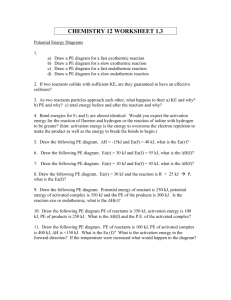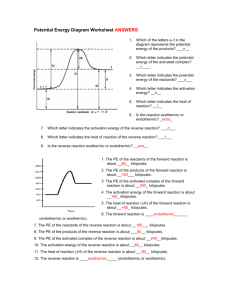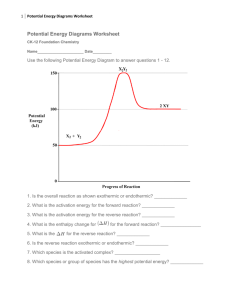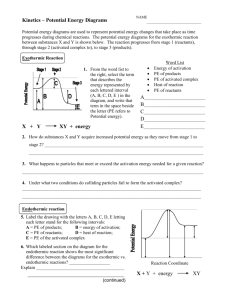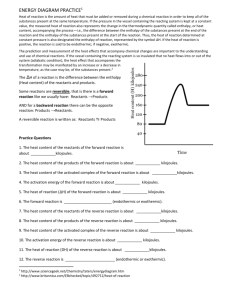Potential Energy Diagrams & Reaction Rates Worksheet
advertisement
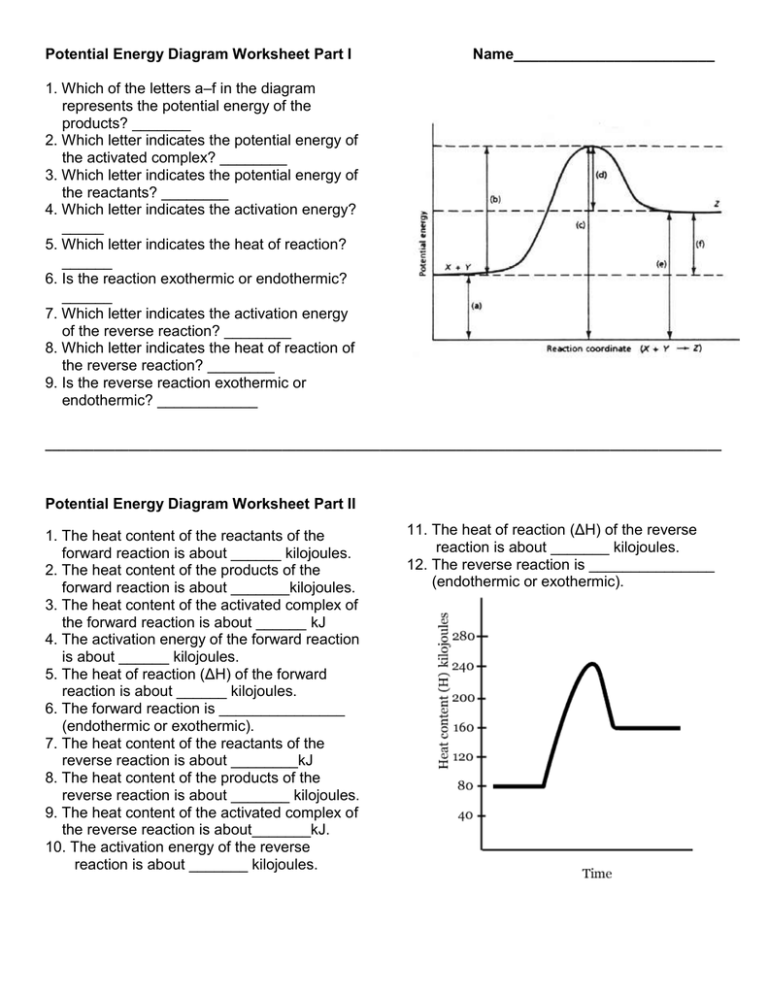
Potential Energy Diagram Worksheet Part I Name________________________ 1. Which of the letters a–f in the diagram represents the potential energy of the products? _______ 2. Which letter indicates the potential energy of the activated complex? ________ 3. Which letter indicates the potential energy of the reactants? ________ 4. Which letter indicates the activation energy? _____ 5. Which letter indicates the heat of reaction? ______ 6. Is the reaction exothermic or endothermic? ______ 7. Which letter indicates the activation energy of the reverse reaction? ________ 8. Which letter indicates the heat of reaction of the reverse reaction? ________ 9. Is the reverse reaction exothermic or endothermic? ____________ _________________________________________________________________________________________________ Potential Energy Diagram Worksheet Part II 1. The heat content of the reactants of the forward reaction is about ______ kilojoules. 2. The heat content of the products of the forward reaction is about _______kilojoules. 3. The heat content of the activated complex of the forward reaction is about ______ kJ 4. The activation energy of the forward reaction is about ______ kilojoules. 5. The heat of reaction (ΔH) of the forward reaction is about ______ kilojoules. 6. The forward reaction is _______________ (endothermic or exothermic). 7. The heat content of the reactants of the reverse reaction is about ________kJ 8. The heat content of the products of the reverse reaction is about _______ kilojoules. 9. The heat content of the activated complex of the reverse reaction is about_______kJ. 10. The activation energy of the reverse reaction is about _______ kilojoules. 11. The heat of reaction (ΔH) of the reverse reaction is about _______ kilojoules. 12. The reverse reaction is _______________ (endothermic or exothermic). Name ______________________________________ Date ______________ Period _________ Energy Ws #1: Reaction Rates 1. Chemical reactions occur when reactants collide. For what reasons may a collision fail to produce a chemical reaction? 2. If every collision between reactants lead to a reaction, what determines the rate at which the reaction occurs? 3. What is the activation energy of a reaction, and how is this energy related to the activated complex of the reaction? 4. What happens when a catalyst is used in a reaction? 5. Name 4 things that will speed up or slow down a chemical reaction. 6. Draw an energy diagram for a reaction. (label the axis) Potential energy of reactants = 350 KJ/mole Activation energy = 100 KJ/mole Potential energy of products = 250 KJ/mole 7. Is the reaction in # 6 exothermic or endothermic? Explain. 8. How could you lower the activation energy for the reaction in #6?
